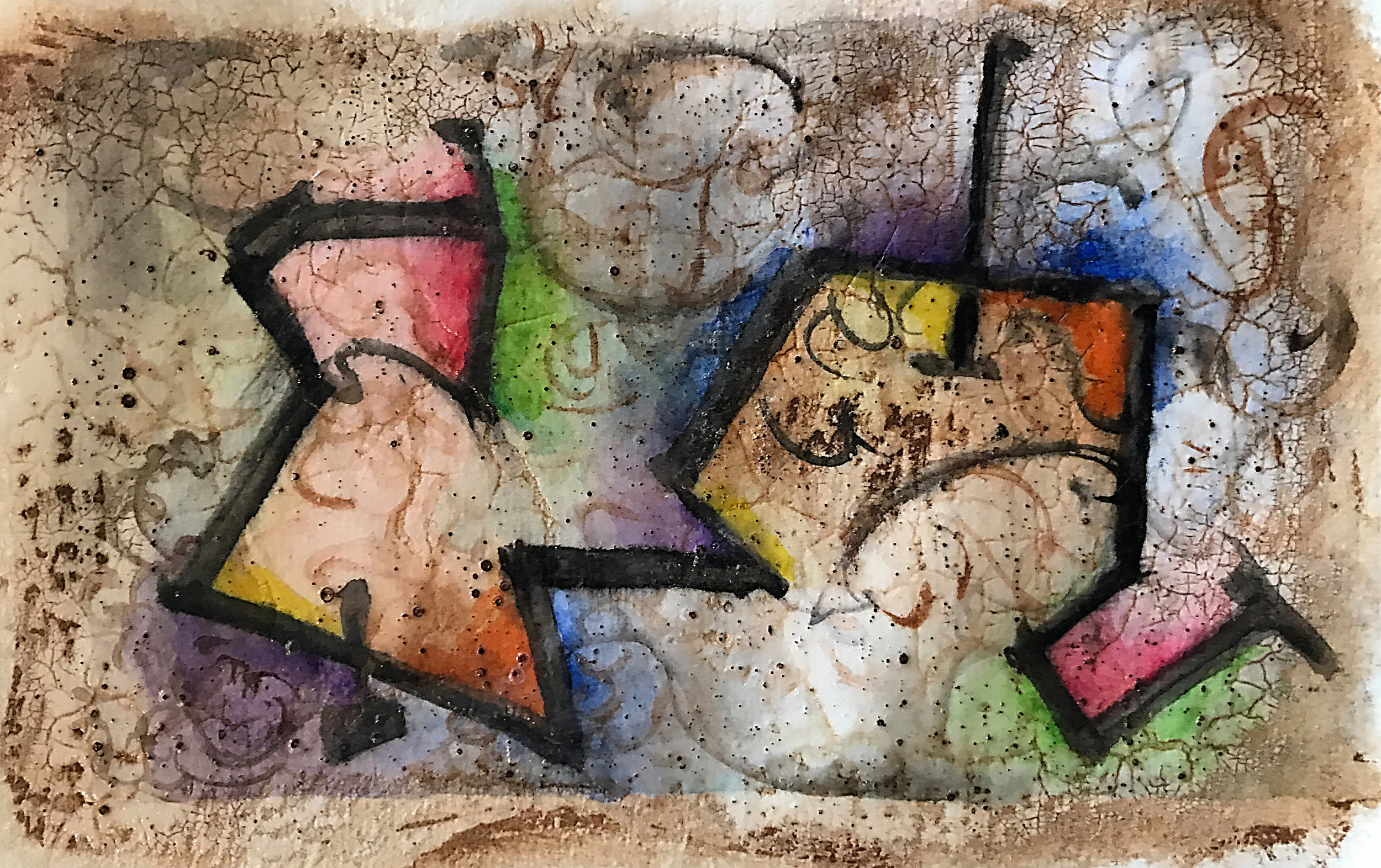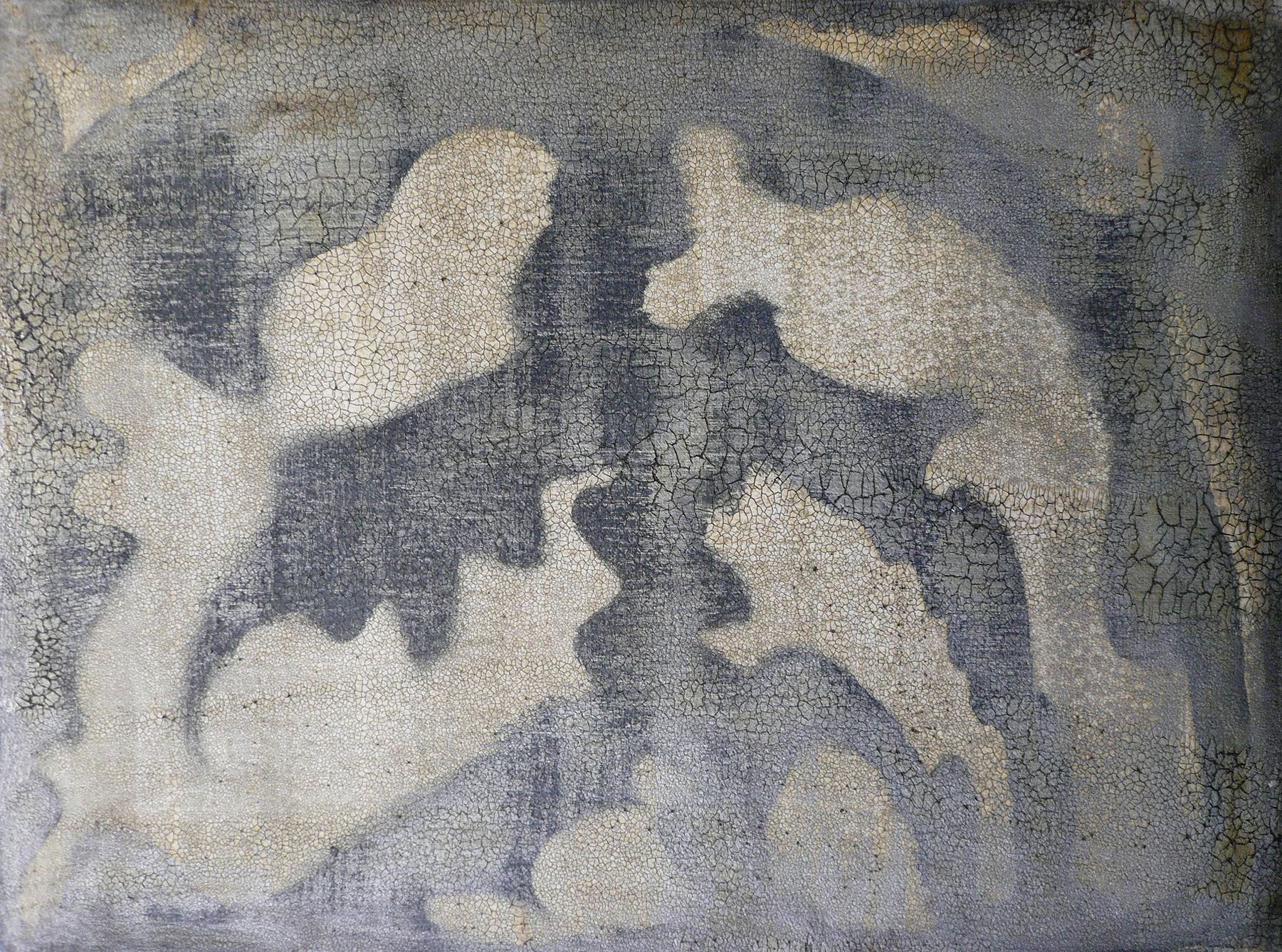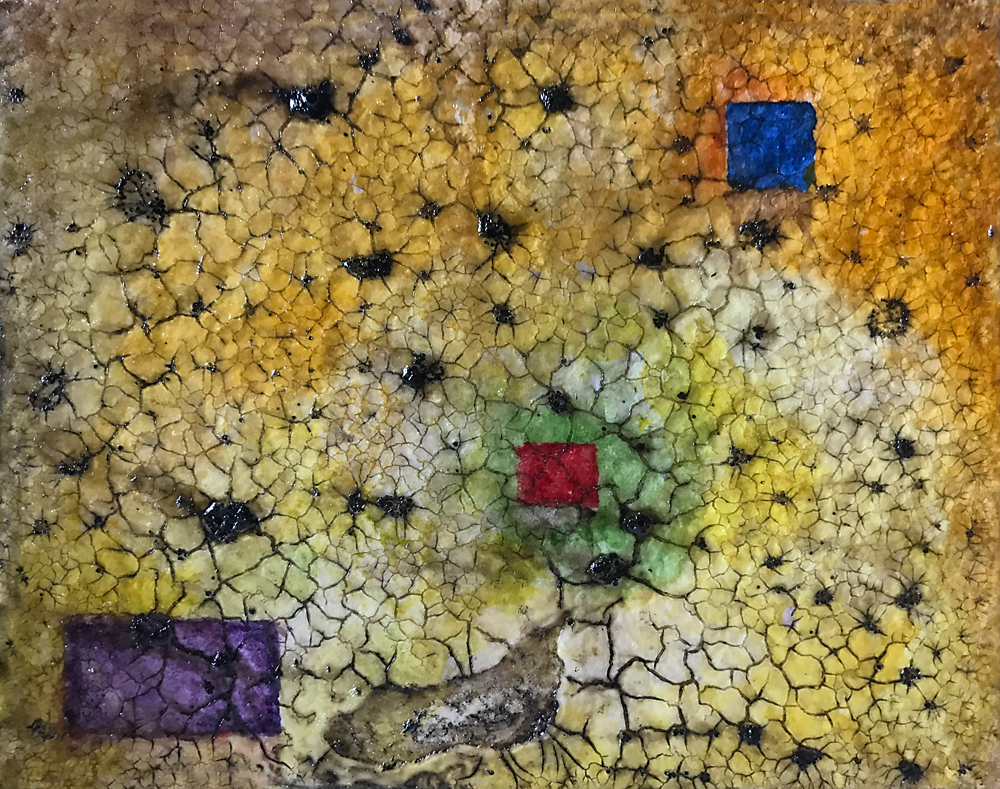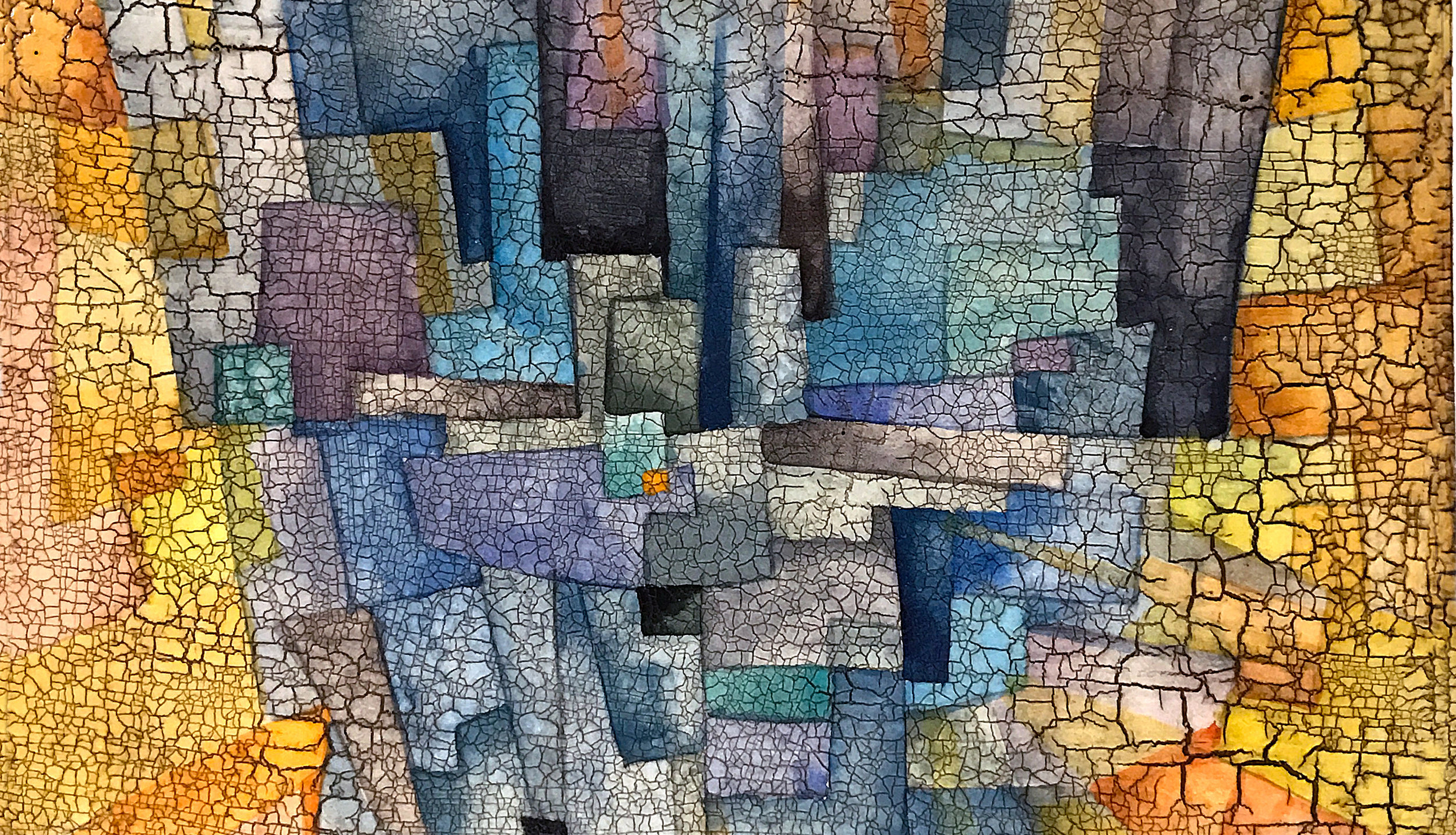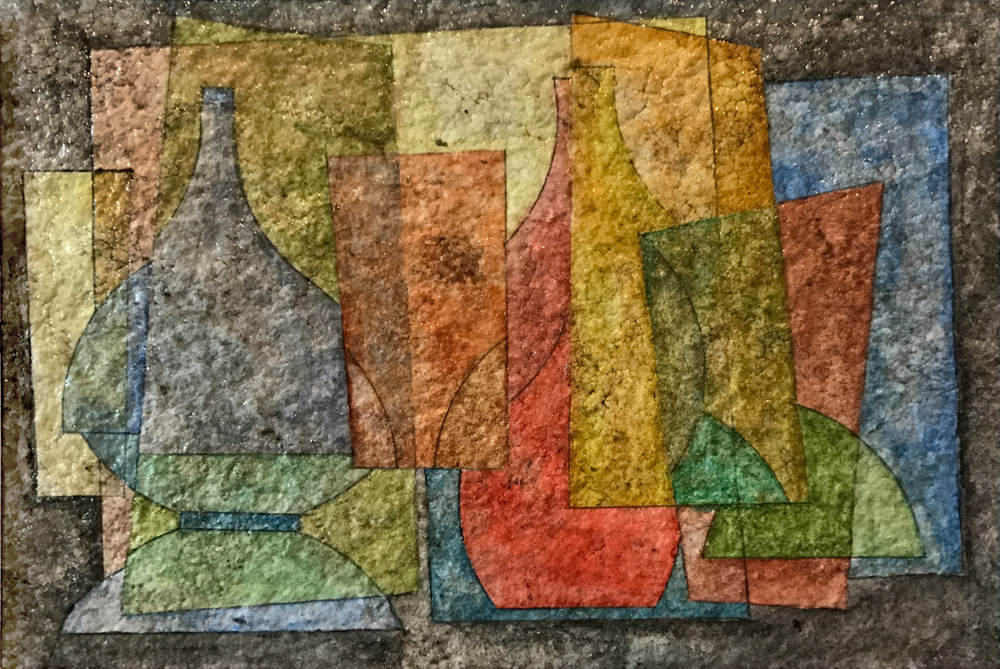Sonja Sekula (1918-1963), an hors-édition canvas preceding the Reassignments series, 2017. Oil, acrylic, watercolor and plaster on canvas, 36 x 48 inches
The Reassignments series addresses the gender inequity that persists in the record of 20th-century abstract art. Each canvas takes its formal cues (and title) from a specific 20th-century female artist (or group of artists) whose work is of unquestionable historical and artistic value yet remains largely unknown to the general public and insufficiently recognized within the profession of art history. I was very gratified that the prototype for the series, Sonja Sekula (1918-1963), brought the evening's highest price at the 24th annual auction held to benefit the Southern Utah Museum of Art (SUMA), to which all proceeds were donated.
The Ekphrastic Review has published my little painting, I Dissolve, along with Nano Taggart's poem Waylaid. I am grateful to Ekphrastic's founding editor, Lorette C. Luzajic, for the recognition.
Terrain.org: A Journal of the Built + Natural Environments has published one of the recent inter-arts exchanges between me and poet Nathaniel Taggart. Established more than twenty years ago by Simmons Buntin and Todd Ziebarth, Terrain.org is one of the oldest online journals of contemporary culture.
Sky Solidified, in the series Engine of Color/Motor of Form [May Swenson], 2017. Oil, watercolor, acrylic and plaster on canvas, 22 x 29 inches.
Writer Amy Brunvand has published a beautiful and keenly observant review of Engine of Color/Motor of Form for Artists of Utah's 15 Bytes Art Magazine. I'm grateful to Ms. Brunvand for her careful and deeply insightful analysis.
In February 2018 my most recent show of new work concluded its run at Linda Kiley's Art Works Gallery in Cedar City, Utah. Both the exhibition and its special opening event were entitled Engine of Color/Motor of Form. The title was taken from May Swenson's 1960 poem At the Museum of Modern Art, and Swenson's poetry was a catalyst for four of the paintings. In addition, seven pictures were inspired by the poems of regional poet Nathaniel Taggart; I was honored that Nano, who contributed several new poems based in part on my paintings, suggested we collaborate. A full-color chapbook, featuring several of the poems and paintings in the show, has been published and is available through Art Works. An updated version of this exhibition, featuring several new paintings, opened in the galleries of Gerald R. Sherratt Library on the Southern Utah University campus in March 2018. I want to thank Professor Phil Roché at the Library for offering to host the show; Nano Taggart for his generosity in lending several works from his collection; and Linda Kiley again, for coordinating with Nano and, of course, for continuing her splendid representation of my paintings at Art Works Gallery.
What if the formal foundations for abstraction and non-objective art had developed organically alongside classical naturalism, beginning with the early Renaissance at the start of the 15th century?
Imagined this way, the stigmas of empty innovation for modernism’s sake—so often attached to modern art of the 20th century—and empty mimetic copywork for tradition’s sake—an attack still often leveled against the western canon by modern scholars—might never have materialized, allowing instead for the gestation of a rich amalgam of these two strains of European art.
I begin each painting by considering a different period, style or school of art from the past, or the output of a single artist at a given moment in her career. I then try to identify those features of the art which are most likely to survive the translation from representation to abstraction, or from one form of abstraction to another. This is a personal process of formal response to visual prompts, not a disciplined analysis. I make no claim of accuracy, nor even of credibility for the images that result. If the viewer bears my premise in mind while viewing the paintings, however, both the differences and the consistencies among them will probably make more sense.


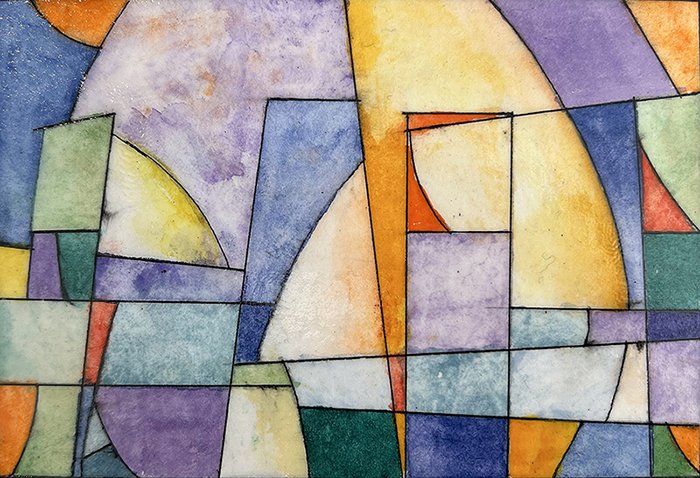








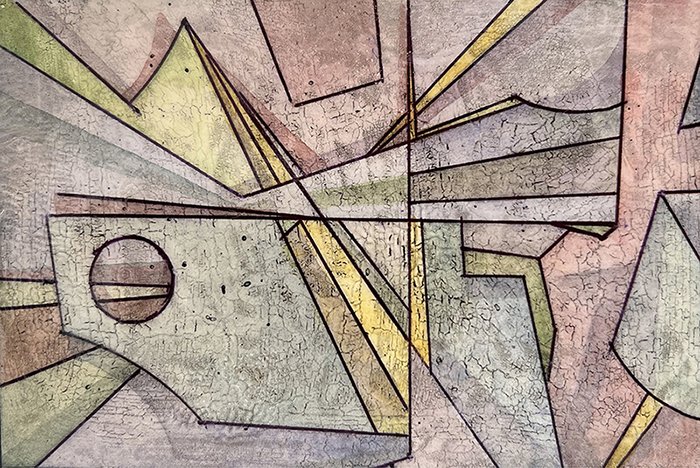













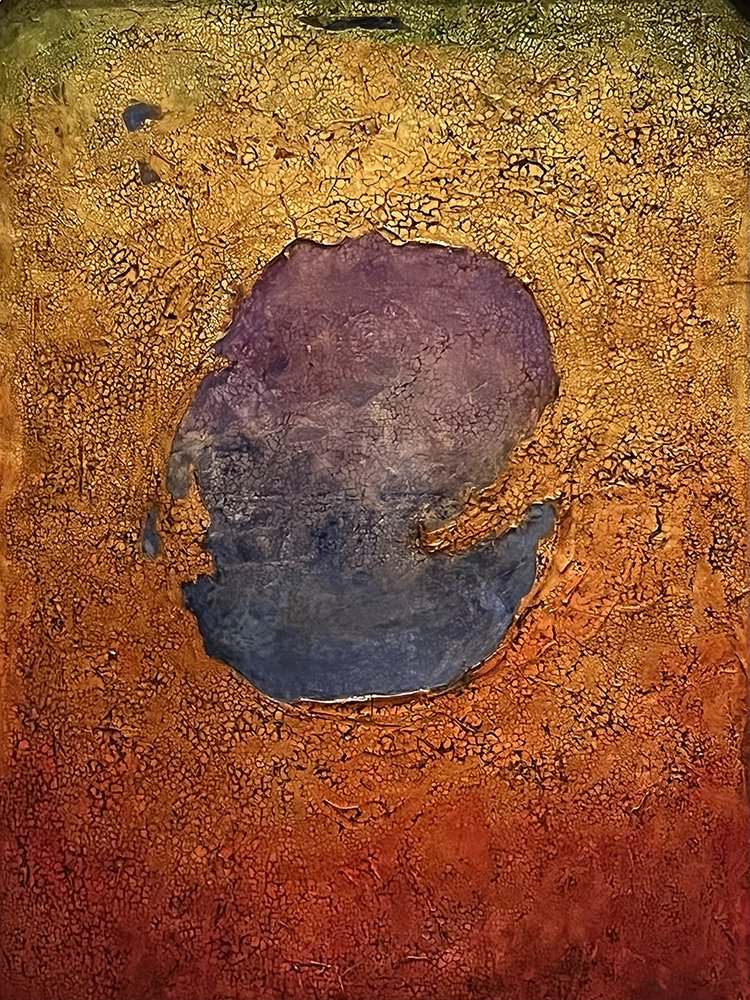








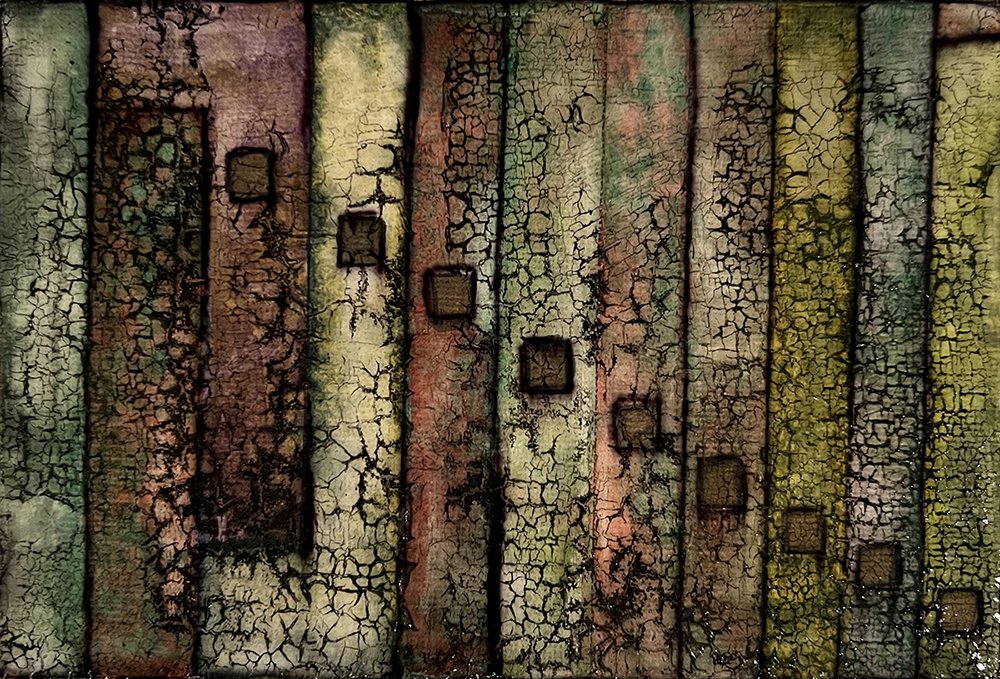





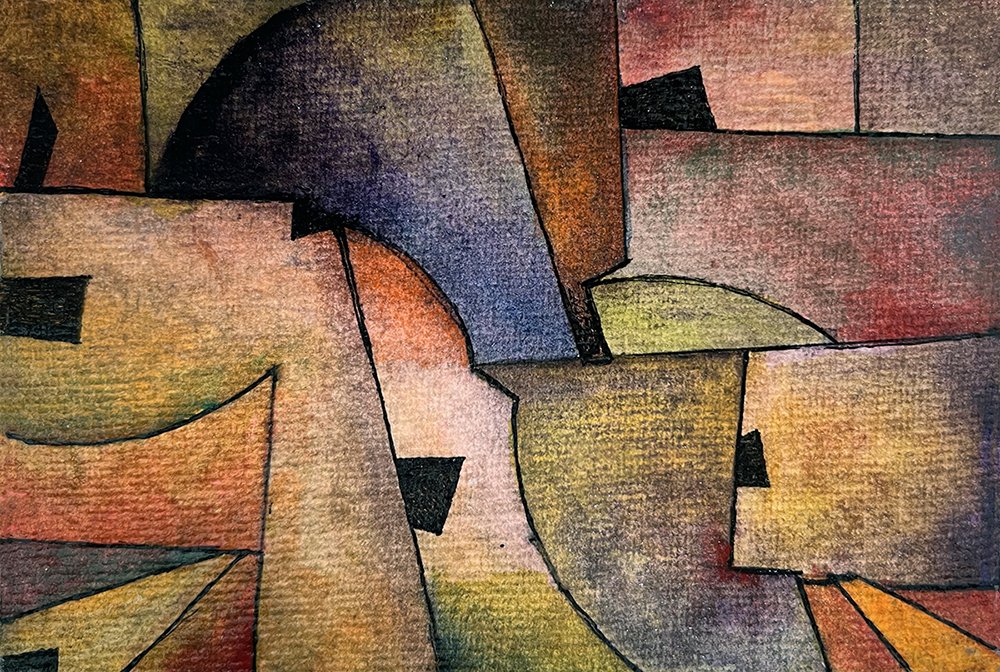

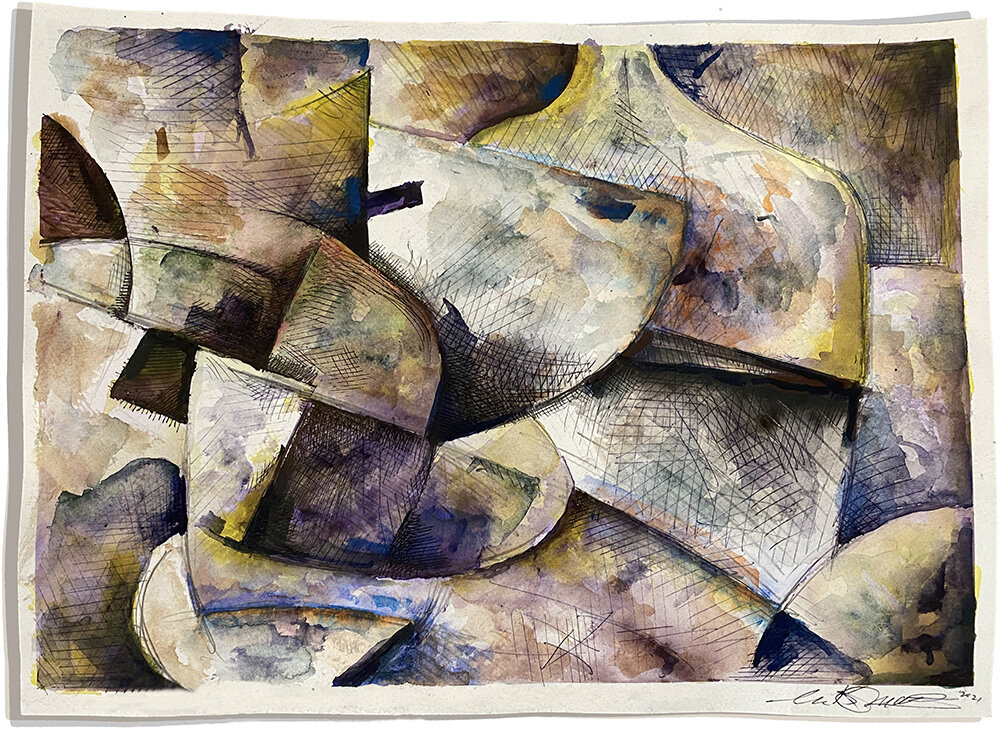

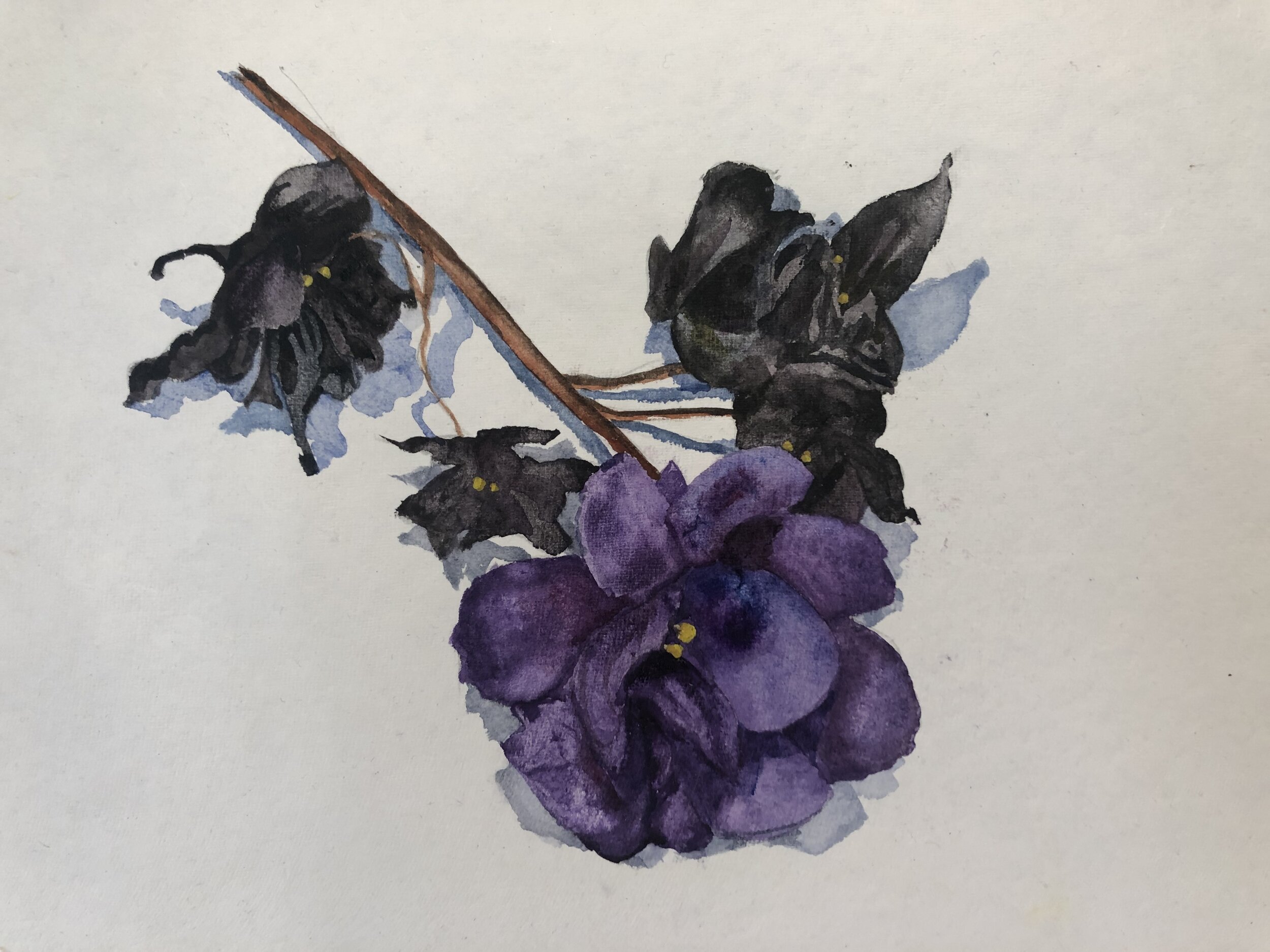

![Mon joli and [Ce sont de] grands bals, from the Reassignments series, 2019; acrylic on canvas and canvas board, each 16 x 20 inches, framed separately but forming a single diptychLately I’ve been addressing current political and social issues by re-purposing a broad range of abstract and non-representational iconography and formal idioms. Most of my paintings explore narrative themes ambiguously; many of my current ones do not. The Reassignments series deals with an ongoing crisis in the field of art history, one prompted by increasing awareness of the gender gap in the canon of artists and the gulf between historical reality and fictions supported by my discipline throughout the past century or longer. With the diptych above, I’ve begun a series of paired paintings reflecting (mainly through effects of style) tropes of gender – one painting “female,” the other “male.”In each of the three paintings I exhibited at the 2019 SUU faculty show (of which a detail from one may be seen below), an example of my work appears in three different styles, each suggested by and adapted from that of a historically important female abstractionist of the last 100 years – and in each, the painting is accompanied by another image (also inspired by that artist’s style) which has been obliterated by a (now deteriorating) editorial barrier. Both the contrasting and the linking formal elements between the exposed image and the concealed one are intentional references to the #MeToo theme. The titles of the latest paintings are taken from the text of A Funny Thing, by John Foxx.](https://images.squarespace-cdn.com/content/v1/53b5e277e4b079c1947d6e6d/1552953971084-NRB1I4P2M20JB3FA0ZMT/Kent-MarvickArt-2019-ReassignmentsSeries3-DesBalsMonJoliLo.jpg)
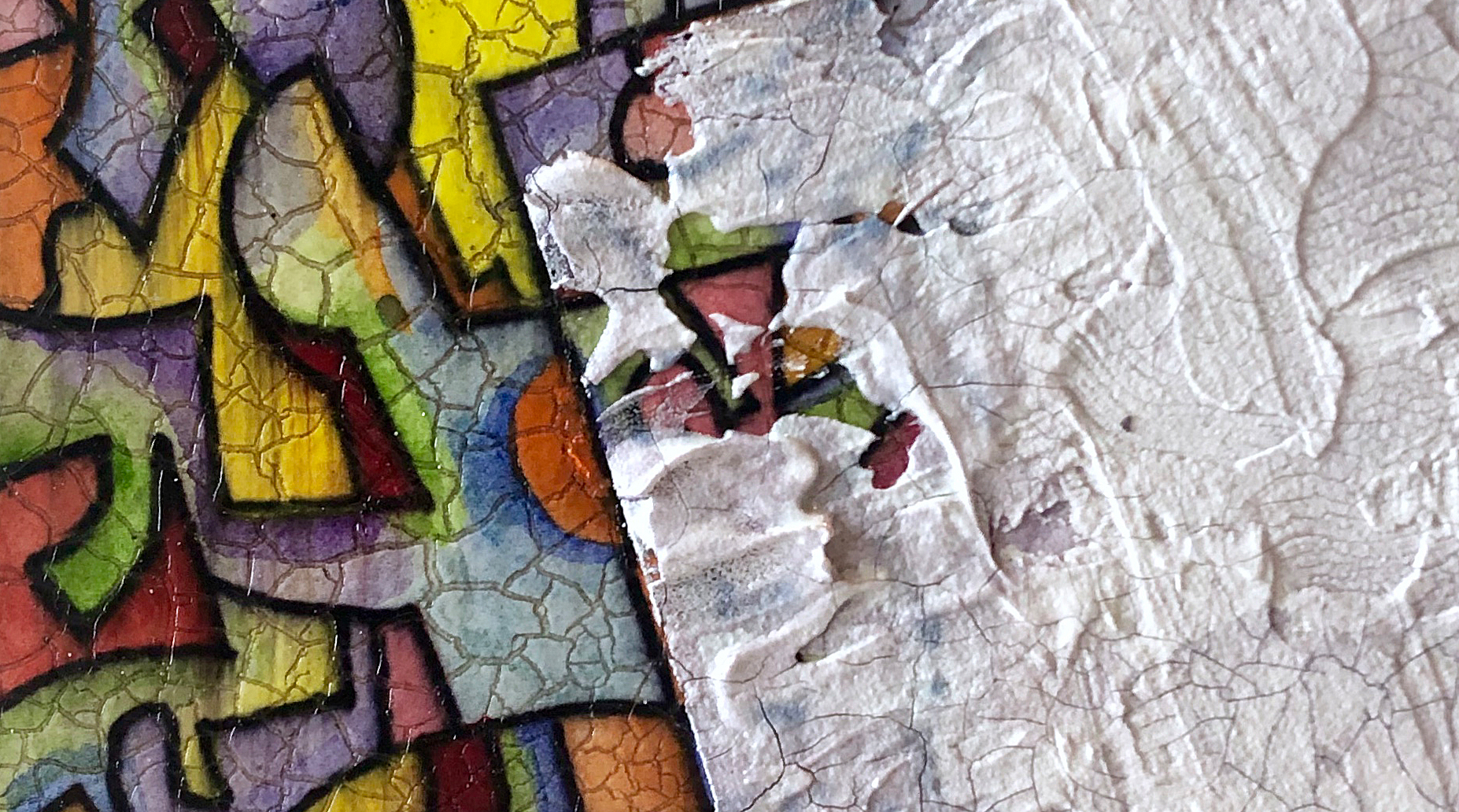
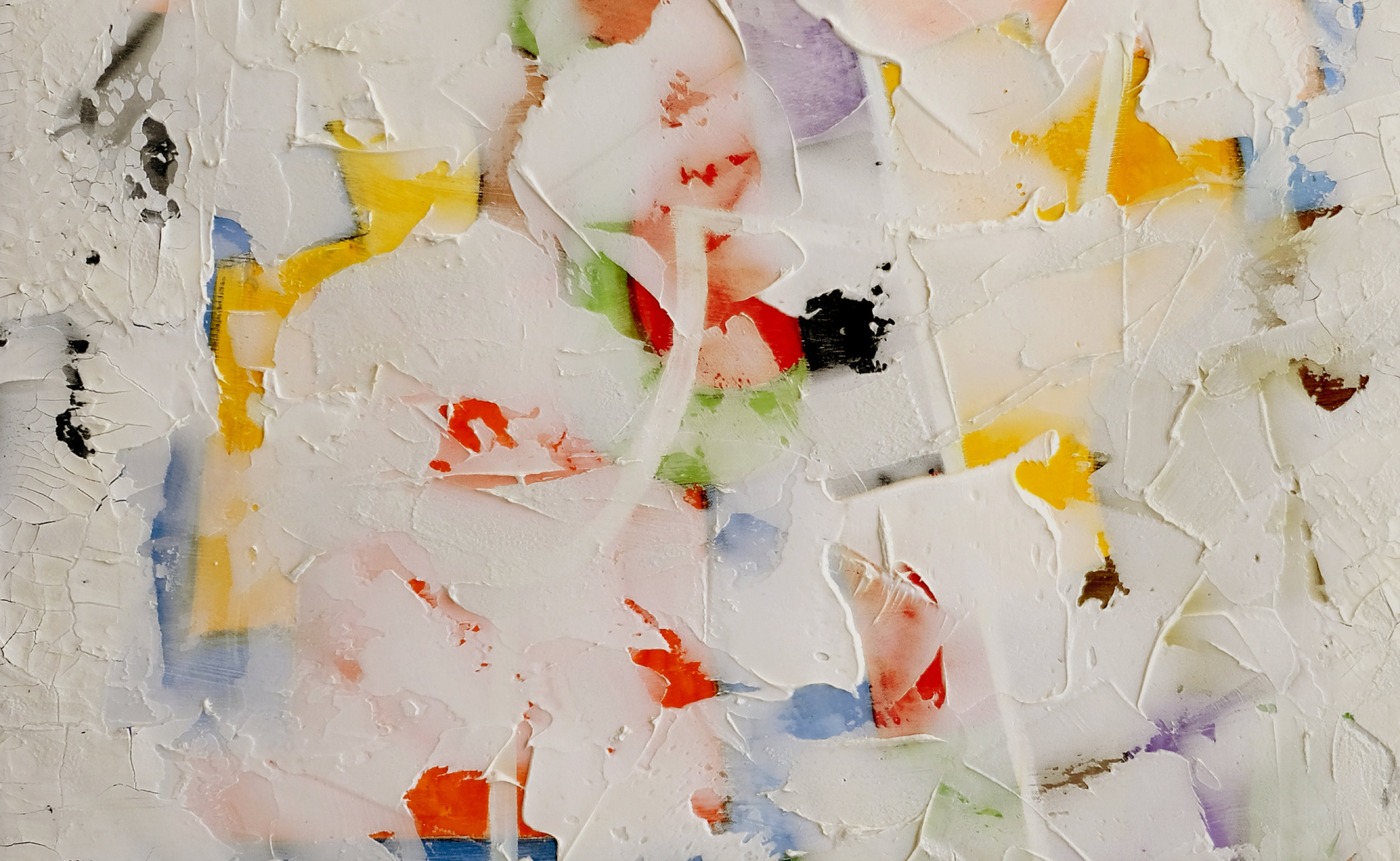

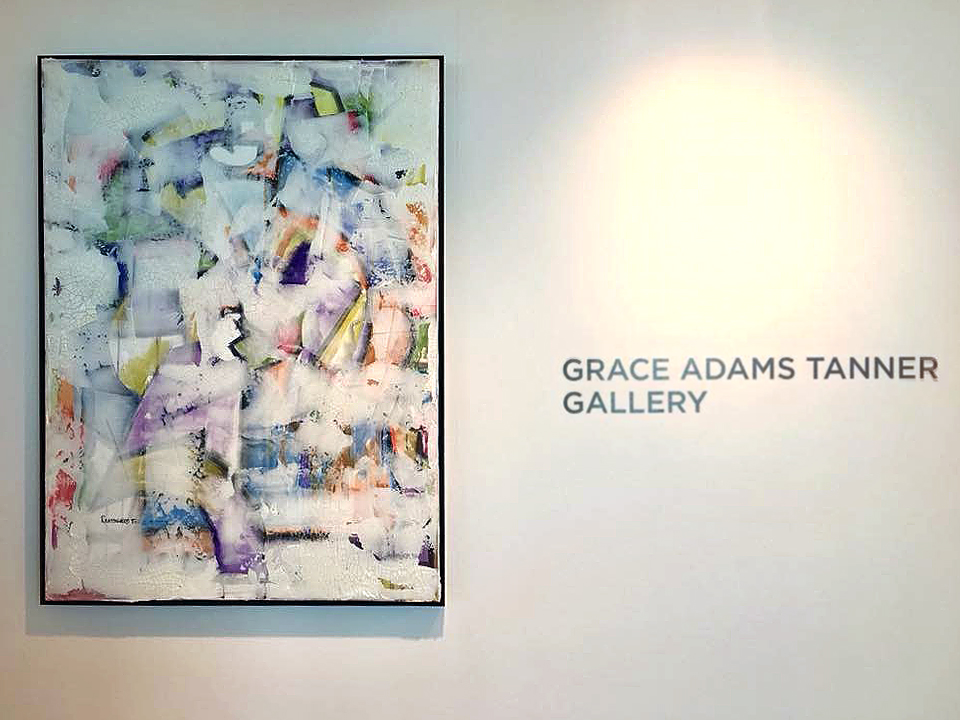
![Sky Solidified, from the series Engine of Color/Motor of Form [May Swenson], 2017. Oil, watercolor, acrylic and plaster on canvas, 22 x 29 inches.](https://images.squarespace-cdn.com/content/v1/53b5e277e4b079c1947d6e6d/1531075213165-NTASW4SMOAPEA7O2HZM7/MarvickArt-2017-SuperimposedInteriorsSeries%2CMaySwenson-24x18-SkySolidifiedLo.jpg)

